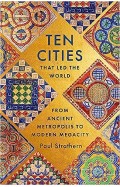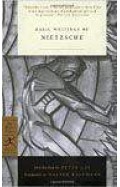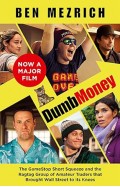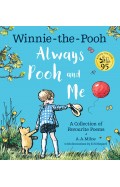Dark Brilliance - The Age of Reason from Decartes to Peter the Great
By: Paul Strathern
-
Rs 3,595.50
- Rs 3,995.00
- 10%
You save Rs 399.50.
Due to constant currency fluctuation, prices are subject to change with or without notice.
During the 1600s, between the end of the Renaissance and the start of the Enlightenment, Europe lived through an era known as the Age of Reason. This was a revolutionary period which saw great advances in areas such as art, science, philosophy, political theory and economics.
However, all this was accomplished against a background of extreme political turbulence and irrational behaviour on a continental scale in the form of internal conflicts and international wars. Indeed, the Age of Reason itself was born at the same time as the Thirty Years' War, which would devastate central Europe to an extent that would not be seen again until the twentieth century.
The period also saw the development of European empires across world and a lucrative new transatlantic commerce began, which brought transformative riches to western European society. However, there was a dark underside to this brilliant wealth: it was dependent upon mass slavery.
By exploring all the key events and bringing to life some of the most influential characters of the era, including Caravaggio, Rembrandt, Newton, Descartes, Spinoza, Louis XIV and Charles I, Paul Strathern tells the story of this paradoxical age, while also counting the human cost of imposing the progress and modernity upon which the Western world was built.
During the 1600s, between the end of the Renaissance and the start of the Enlightenment, Europe lived through an era known as the Age of Reason. This was a revolutionary period which saw great advances in areas such as art, science, philosophy, political theory and economics.
However, all this was accomplished against a background of extreme political turbulence and irrational behaviour on a continental scale in the form of internal conflicts and international wars. Indeed, the Age of Reason itself was born at the same time as the Thirty Years' War, which would devastate central Europe to an extent that would not be seen again until the twentieth century.
The period also saw the development of European empires across world and a lucrative new transatlantic commerce began, which brought transformative riches to western European society. However, there was a dark underside to this brilliant wealth: it was dependent upon mass slavery.
By exploring all the key events and bringing to life some of the most influential characters of the era, including Caravaggio, Rembrandt, Newton, Descartes, Spinoza, Louis XIV and Charles I, Paul Strathern tells the story of this paradoxical age, while also counting the human cost of imposing the progress and modernity upon which the Western world was built.
Rise and Fall: A History of the World in Ten Empires
By: Paul Strathern
Rs 2,335.50 Rs 2,595.00 Ex Tax :Rs 2,335.50
The Florentines - From Dante to Galileo
By: Paul Strathern
Rs 2,205.75 Rs 2,595.00 Ex Tax :Rs 2,205.75
Ten Cities That Led the World - From Ancient Metropolis to Modern Megacity
By: Paul Strathern
Rs 2,515.50 Rs 2,795.00 Ex Tax :Rs 2,515.50
The Other Renaissance - From Copernicus to Shakespeare
By: Paul Strathern
Rs 3,145.50 Rs 3,495.00 Ex Tax :Rs 3,145.50
Dark Brilliance - The Age of Reason from Decartes to Peter the Great
By: Paul Strathern
Rs 5,305.50 Rs 5,895.00 Ex Tax :Rs 5,305.50
Dark Brilliance - The Age of Reason from Decartes to Peter the Great
By: Paul Strathern
Rs 3,595.50 Rs 3,995.00 Ex Tax :Rs 3,595.50
Zubin Mehta: A Musical Journey (An Authorized Biography)
By: VOID - Bakhtiar K. Dadabhoy
Rs 892.50 Rs 1,050.00 Ex Tax :Rs 892.50
The Greatness Mindset - Unlock the Power of Your Mind and Live Your Best Life Today
By: Lewis Howes
Rs 4,405.50 Rs 4,895.00 Ex Tax :Rs 4,405.50
How to Understand and Deal with Health Anxiety - Everything You Need to Know to Manage Health Anxiety
By: Katy Georgiou
Rs 2,965.50 Rs 3,295.00 Ex Tax :Rs 2,965.50
Decisionscape - How Thinking Like an Artist Can Improve Our Decision-Making
By: Elspeth Kirkman
Rs 8,995.50 Rs 9,995.00 Ex Tax :Rs 8,995.50
The Interior Design Handbook - Furnish, Decorate, and Style Your Space
By: Frida Ramstedt
Rs 7,375.50 Rs 8,195.00 Ex Tax :Rs 7,375.50
The Quest For Meaning: Developing A Philosophy Of Pluralism
By: Tariq Ramadan
Rs 1,185.75 Rs 1,395.00 Ex Tax :Rs 1,185.75
The Basic Writings of Nietzsche
By: Peter Gay/Sigmund Freud
Rs 3,865.50 Rs 4,295.00 Ex Tax :Rs 3,865.50
The Greatness Mindset - Unlock the Power of Your Mind and Live Your Best Life Today
By: Lewis Howes
Rs 4,405.50 Rs 4,895.00 Ex Tax :Rs 4,405.50
How to Understand and Deal with Health Anxiety - Everything You Need to Know to Manage Health Anxiety
By: Katy Georgiou
Rs 2,965.50 Rs 3,295.00 Ex Tax :Rs 2,965.50
Decisionscape - How Thinking Like an Artist Can Improve Our Decision-Making
By: Elspeth Kirkman
Rs 8,995.50 Rs 9,995.00 Ex Tax :Rs 8,995.50
The Interior Design Handbook - Furnish, Decorate, and Style Your Space
By: Frida Ramstedt
Rs 7,375.50 Rs 8,195.00 Ex Tax :Rs 7,375.50
Means of Salvation
By: Hazrat Pir Doctor Ali Muhammad Choudhary
Rs 765.00 Rs 900.00 Ex Tax :Rs 765.00
What You Think of Me Is None of My Business
By: Terry Cole-Whittaker
Rs 2,970.75 Rs 3,495.00 Ex Tax :Rs 2,970.75
Stand Up Straight: 10 Life Lessons from the Royal Military Academy Sandhurst
By: Major General Paul Nanson
Rs 2,785.50 Rs 3,095.00 Ex Tax :Rs 2,785.50
The Survivor Wants to Die at the End Volume 3
By: Adam Silvera
Rs 3,505.50 Rs 3,895.00 Ex Tax :Rs 3,505.50
Jingle Bells Video Board Book (p i kids) Read, Watch, & Sing! Free Downloadable App
By: Phoenix International Publications
Rs 1,497.50 Rs 2,995.00 Ex Tax :Rs 1,497.50
Allah and Me - Learning to Live Allah's Way
By: Vinni Rahman
Rs 1,345.50 Rs 1,495.00 Ex Tax :Rs 1,345.50
The Alchemyst: Book 1 (The Secrets of the Immortal Nicholas Flamel)
By: Michael Scott
Rs 1,795.50 Rs 1,995.00 Ex Tax :Rs 1,795.50
Dumb Money - The Major Motion Picture, Based on the Bestselling Novel Previously Published As the Antisocial Network
By: Ben Mezrich
Rs 2,065.50 Rs 2,295.00 Ex Tax :Rs 2,065.50
LEGO Ninjago Secret World of the Ninja New Edition - With Exclusive Lloyd LEGO Minifigure
By: Shari Last
Rs 3,775.50 Rs 4,195.00 Ex Tax :Rs 3,775.50
Jewel Loom Inspirations: Quick and Fun Beading and Jewelry Projects
By: Julianna C. Avelar
Rs 1,610.75 Rs 1,895.00 Ex Tax :Rs 1,610.75
Winnie-The-Pooh: Always Pooh and Me: a Collection of Favourite Poems
By: A. A. Milne
Rs 845.75 Rs 995.00 Ex Tax :Rs 845.75
A Child Alone with Strangers: A Novel
By: Philip Fracassi
Rs 6,745.50 Rs 7,495.00 Ex Tax :Rs 6,745.50
Zubin Mehta: A Musical Journey (An Authorized Biography)
By: VOID - Bakhtiar K. Dadabhoy
Rs 892.50 Rs 1,050.00 Ex Tax :Rs 892.50
Rise and Fall: A History of the World in Ten Empires
By: Paul Strathern
Rs 2,335.50 Rs 2,595.00 Ex Tax :Rs 2,335.50
The Florentines - From Dante to Galileo
By: Paul Strathern
Rs 2,205.75 Rs 2,595.00 Ex Tax :Rs 2,205.75
Ten Cities That Led the World - From Ancient Metropolis to Modern Megacity
By: Paul Strathern
Rs 2,515.50 Rs 2,795.00 Ex Tax :Rs 2,515.50
The Other Renaissance - From Copernicus to Shakespeare
By: Paul Strathern
Rs 3,145.50 Rs 3,495.00 Ex Tax :Rs 3,145.50
Dark Brilliance - The Age of Reason from Decartes to Peter the Great
By: Paul Strathern
Rs 5,305.50 Rs 5,895.00 Ex Tax :Rs 5,305.50
Dark Brilliance - The Age of Reason from Decartes to Peter the Great
By: Paul Strathern
Rs 3,595.50 Rs 3,995.00 Ex Tax :Rs 3,595.50
The Greatness Mindset - Unlock the Power of Your Mind and Live Your Best Life Today
By: Lewis Howes
Rs 4,405.50 Rs 4,895.00 Ex Tax :Rs 4,405.50
How to Understand and Deal with Health Anxiety - Everything You Need to Know to Manage Health Anxiety
By: Katy Georgiou
Rs 2,965.50 Rs 3,295.00 Ex Tax :Rs 2,965.50
Decisionscape - How Thinking Like an Artist Can Improve Our Decision-Making
By: Elspeth Kirkman
Rs 8,995.50 Rs 9,995.00 Ex Tax :Rs 8,995.50
The Interior Design Handbook - Furnish, Decorate, and Style Your Space
By: Frida Ramstedt
Rs 7,375.50 Rs 8,195.00 Ex Tax :Rs 7,375.50













-120x187.jpg?q6)





-120x187.jpg?q6)
























-120x187.jpg?q6)















